ENTITRE
a tribute to physical matter in the digital age.
ENTITRE
Welcome to LWJ’s blog.
An editorial space illuminating the inspirations we draw from both East and West—spanning architecture, contemporary art, design and the intricate world of gemmology.
ENTITRE - Singer songwriter Sara Boy performs "a little life" for Cube Sessions in Pavillon MMXX
An intimate live performance of a little life by Sara Boy was released part of the Cube Sessions on Beirut-based digital media Balkoon on Nov 20th. The live performance was filmed in Beirut on Beirut Digital District’s rooftop during the Beirut Art Fair 2019 inside Pavilion MMXX, an in-situ exhibition curated by André Damas for LWJ, before Sara Boy headed back to Paris from the middle east.
a little life
Sara Boy released a little life on July 5th, an extract from her upcoming EP now in preparation in Paris after having recently collaborated with Stockholm-based producer Neeco Delaf on the track spring never comes out recalling her time in Dubai.
a little life combines Sara Boy’s emotional ambient sounds and singular voice layerings with powerful lyrics about culture, ancestry, the value of success and the infinite number of lives and perspectives that surround her.
a little life
Sara Boy
about Sara Boy
Sara Boy grew up in South-East Asia but is of French origin. During her high school years she joined a local choir and discovered the Allegri’s Miserere and the power of Gregorian chants, while constantly listening to soul, folk and RnB singer- songwriters. She still draws on this classical repertoire in her songwriting, as her melodies involve multiple vocal layerings and harmonies, giving them an ethereal almost spiritual feel.
Sara Boy released her first EP urotour in 2018 where she poetically speaks about belonging or the lack of it in a globalised world. Showcased on Beehype’s Best tracks of 2018 from the Middle East compilation, Sara Boy finds inspiration in her past and current peregrinations between the East and West.
After her time spent in the Middle East, Sara Boy is now based in Paris and is currently working on her new EP.
ruins and progress - MMXX pavilion by André Chami at Beirut Digital District
MMXX pavilion questions the relation between ruins and progress and the radiant squares of our civilisations
After having followed smartESA’s accelerator programme in Beirut to develop his activities between Europe and the Middle East, Versailles-based cultural entrepreneur and artist André Chami, alongside art consultant Christiane Ashkar, launched MMXX pavilion - a public art programme with a debut exhibition at the Beirut Digital District from the 20th -25th of September on technique and civilisation.
MMXX pavilion curator André Chami before a private visit of the show
MMXX pavilion is a public art initiative that offers unique out-of-museum exhibition formats where invited artists focus on integrating the context of a space within their work.
In conjunction with the 2019 Beirut Art Fair, André Chami curated MMXX pavilion at the Beirut Digital District on Damascus street, a zone that has been active since the beginning of mankind with guest artists Edgar Sarin and Sara Boy.
Edgar Sarin, represented by the Parisian gallery Michel Rein showcased new in-situ pieces produced on the BDD's rooftop following on from his work on technique. Singer-songwriter Sara Boy also made an appearance during the pavilion's opening, performing ambient storytellings.
French artist Edgar Sarin during his stay in Beirut
“vers l’exactitude du nuage” a new group of in-situ sculptures by French artist Edgar Sarin.
vers l'exactitude du nuage 3, Edgar Sarin
vers l'exactitude du nuage 2, Edgar Sarin
variation sur celui du cone de glace, Edgar Sarin 2019
About MMXX
MMXX pavilion questions a territory’s capacity to generate progress.
2020 was supposed to mark the first year of the Universal Exhibition in the Arab World, it has now been postponed to 2021 due to the Covid-19 pandemic.
By choosing to write 2020 in roman letters, MMXX pavilion questions the transition of innovation centres in the Latin and Arab world in their quest for progress.
From the port of Beirut up to Damascus street lies a zone that has been active since the beginning of mankind and that knows significant development projects such as the Beirut Digital District.
MMXX is a pavilion curated by André Chami that questions progress in different value systems through the lens of technique.
MMXX pavilion draws parallels between Versailles, the city of the Sun King and the Levant region.
Waiting on Jesus in Maghdouché
A few kilometers away from the city of Sidon in Southern Lebanon in the Christian village of Maghdouché lies the Melkite Shrine of Saydet El Mantara (Our Lady of Waiting), a Lebanese treasure and pilgrimage site still unbeknownst to many.
After many years of increased effort lead by the Bishop of Sidon Mgr. Elie Haddad along with a team of experts specialised in tracing the pedestrian routes followed by Jesus in South Lebanon, the site was recognized as an international Marian Shrine in 2016.
The sanctuary is located at the top of a hill, overlooking the coast and the city of Sidon. It consists of a tower crowned with the statue of the Virgin and Child, a cathedral, a cemetery and a sacred cave believed to be where the Virgin Mary rested and waited on Jesus when he preached in Sidon.
Some historians argue the worship of Mary by the Lebanese stems from their Pheonician ancestry and devotion to Astarthe as many places of worship dedicated to the goddess were later converted into Christian shrines and temples, including the Shrine of Saydet el Mantara.
The first Marian Shrine was built in 324 AD by the Emperor Constantine the Great at the request of his mother Saint Helena. The Shrine consisted of a tower, but unfortunately no traces are left as it was entirely destroyed in 550 AD after the earthquake. The Mantara grotto was then magically rediscovered centuries later in the 1720s by a shepherd when one of his sheep fell into a crevasse leading to the cave.
A Marian Shrine was then built in 1860 by the Melkite Church. A cemetery was also set up in its enclosure. The Mantara cave was later transformed into a church in the 1960s along with a 36-metre-high tower with a chapel at its base and a bronze statue of the Virgin Mary bearing Jesus Christ at its top.
DISCOVER OUR Miraculous Medals and X Shamballa bracelets inspired by the color of the Cathedral of Maghdouché.
Shrine Bright like Harissa
Known for their unshakable optimism, resourcefulness and resilience, the Lebanese have endured countless hardships over the past 50 years and the recent blast from Beirut’s port on August 4th 2020 is yet another blow to the cumulative challenges the country was already facing.
But in the thick of suffering and pain, hope and faith prevail.
For the multiconfessional state, unity and solace can be found in their shared devotion to the Virgin Mary. Adored and celebrated by Christians and Muslims alike, the Heavenly Mother provides a source of comfort, strength and harmony in times of trouble.
At the back of cars, niched upon building entrances, next to ATMS or elevated at the top of mountains, statues of Mary can be observed on every corner. Mentioned 72 times in the Bible, Lebanon is considered a Holy Land by Christians, the cities of Tyre and Sidon are often referenced in the Bible as places Jesus travelled to. According to Pope Jean Paul II during his visit to Beirut in 1997, “Lebanon is more than a nation, more than a country. It is a message”.
Of the country’s 3000 concentrated religious sites, the Marian Shrines of Harissa and Maghdouché, draw thousands of pilgrims every year. Known as Our Lady of Lebanon, the Shrine of Harissa belongs to the Maronite Patriarchate and is situated 550m above sea level in a small village half an hour from Beirut.
The Shrine is surrounded by 5 churches and is highlighted by a 15 ton bronze statue of the Immaculate Conception facing the sea with her arms stretched, embracing and protecting Beirut from harm. For many Lebanese, the very existence of Lebanon is linked to the Virgin Mary and the construction of Our Lady of Lebanon illustrates this belief as the Shrine was built in 1904, following the proclamation of the dogma of the Immaculate Conception in 1854 by the Pope Pie IX, when Lebanon was still under Ottoman domination.
Inside A.MUSE.UM, Nadim Karam’s creative studio
Known for his dreamlike sculptures and installations, Lebanese architect and artist Nadim Karam is full of surprises and the opening of A.MUSE.UM in 2018 was definitely one of them. Situated in the village of Daroun in the vicinity of the shrine of Our Lady of Lebanon, A.MUSE.UM is a unique private museum and studio space dedicated to art and creation.
A Wild Cat, one of Nadim Karam’s Urban Toy sculptures in downtown Beirut
Imagined like an inverted space, A.MUSE.UM is a dream for dreams. Built below the terraces of Karam’s childhood home, the space naturally espouses the surroundings and stands as the embodiment of the limitless possibilities of the creative mind. It is architecturally breathtaking and calls to mind the stark and spiritual buildings of Tadao Ando, whose classes Karam followed during his doctorate in architecture at the University of Tokyo in Japan in the 1980’s.
As we slowly make our way down the ramp into the heart of Karam’s creative bubble our senses are heightened by the smell of paint and the sight of unfinished canvases left to dry. On the wall a black and white painting catches our eye. It depicts a beautiful Ottoman style house with Karam’s signature child-like figures sitting and fishing on large steps of a leveled garden. A slender creature hovers over the joyful scene. The painting is a magical reiteration of Karam’s family home and studio space and its discovery further enhances our dreamlike visit allowing us to deeply connect with the artwork and experience an intimate and refreshing artistic occurence.
A.MUSE.UM was inaugurated in 2019 with the exhibition “Shorthand, Nadim Karam, Notes from the Archive” curated by Rachel Dedman in association with the Beirut Art Fair. Known for his public art sculptures the exhibition showcased hundreds of the Karam’s preliminary land art drawings, paintings and performance art videos from the past 40 years.
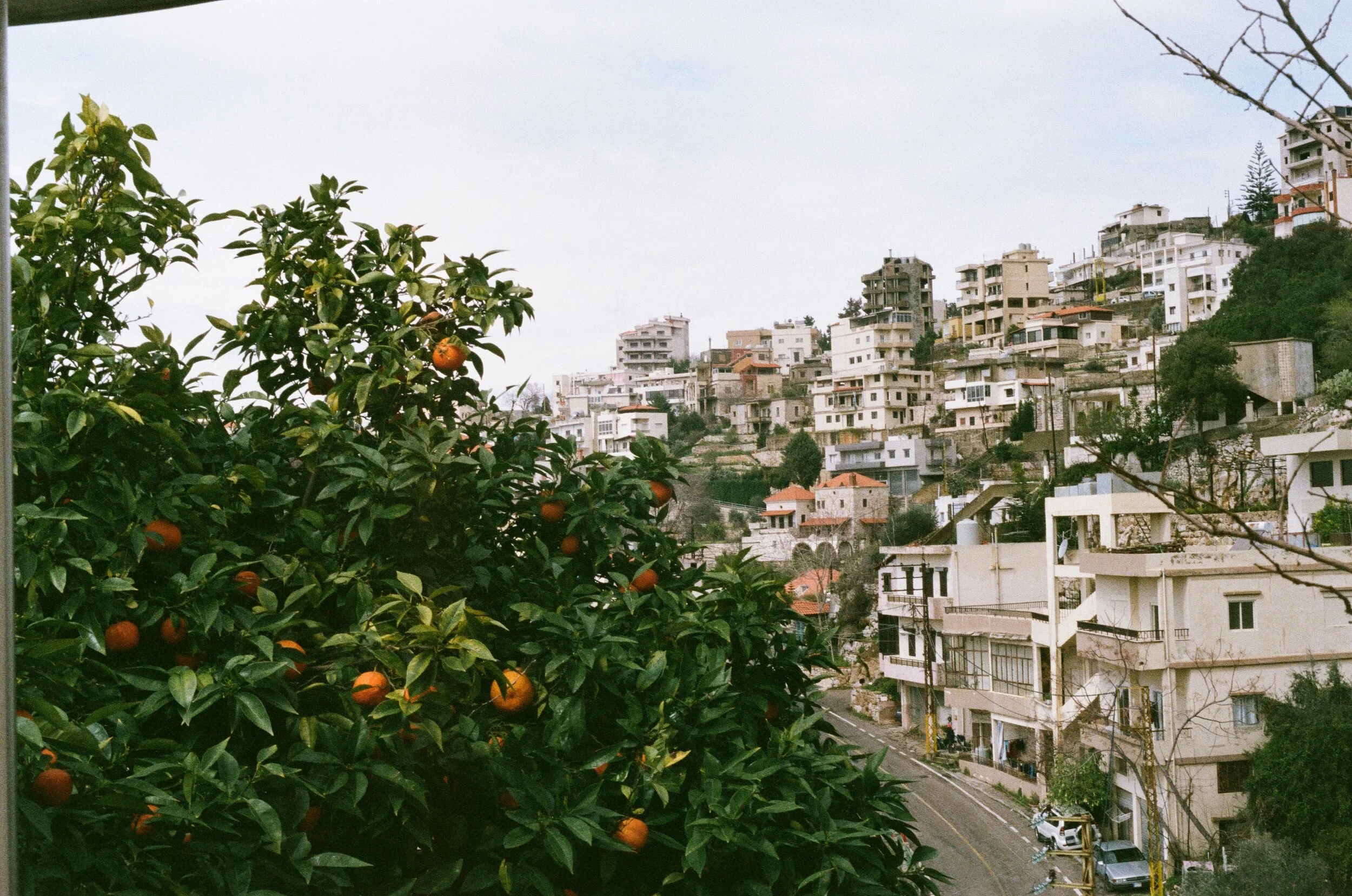
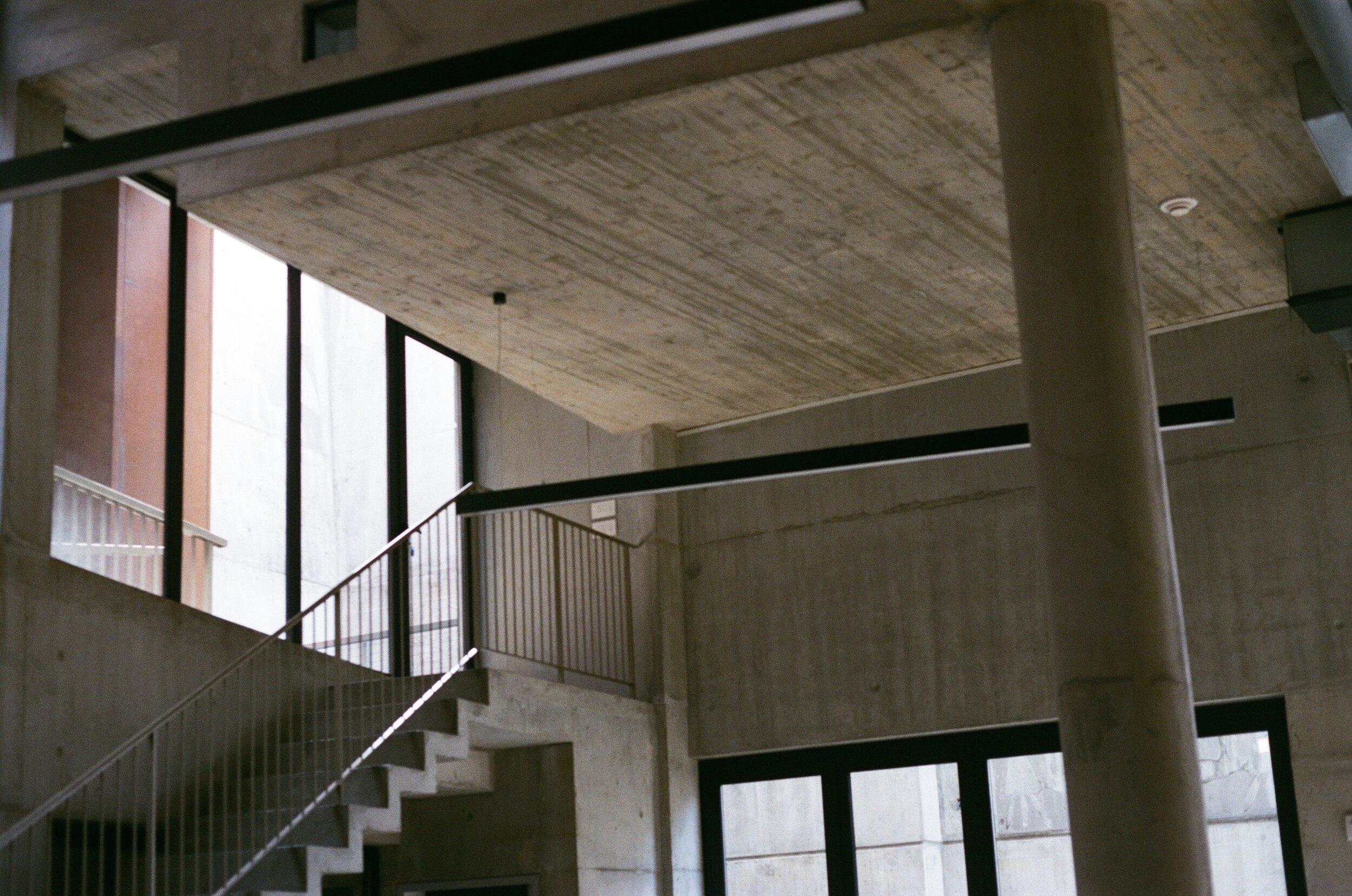

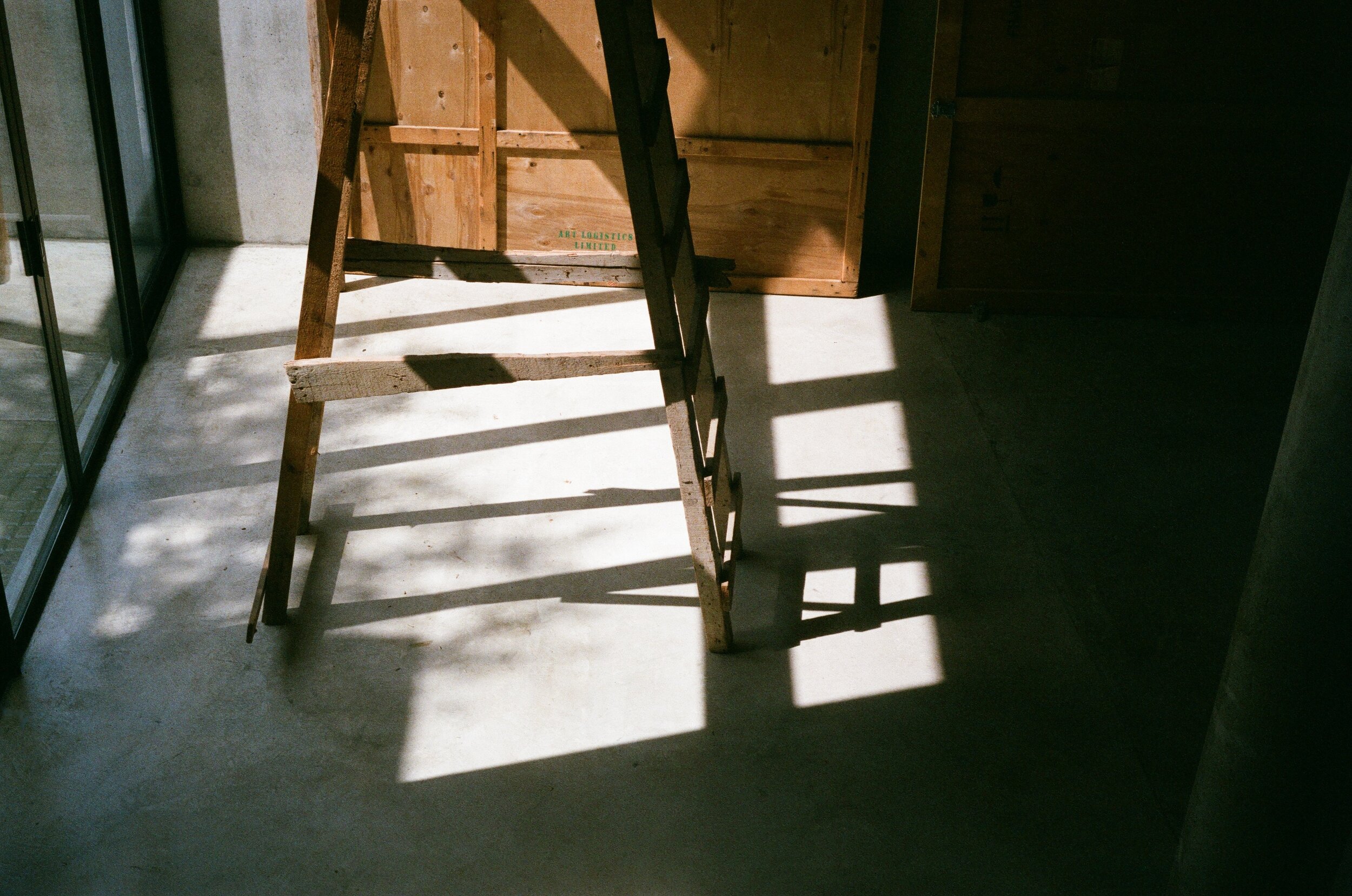
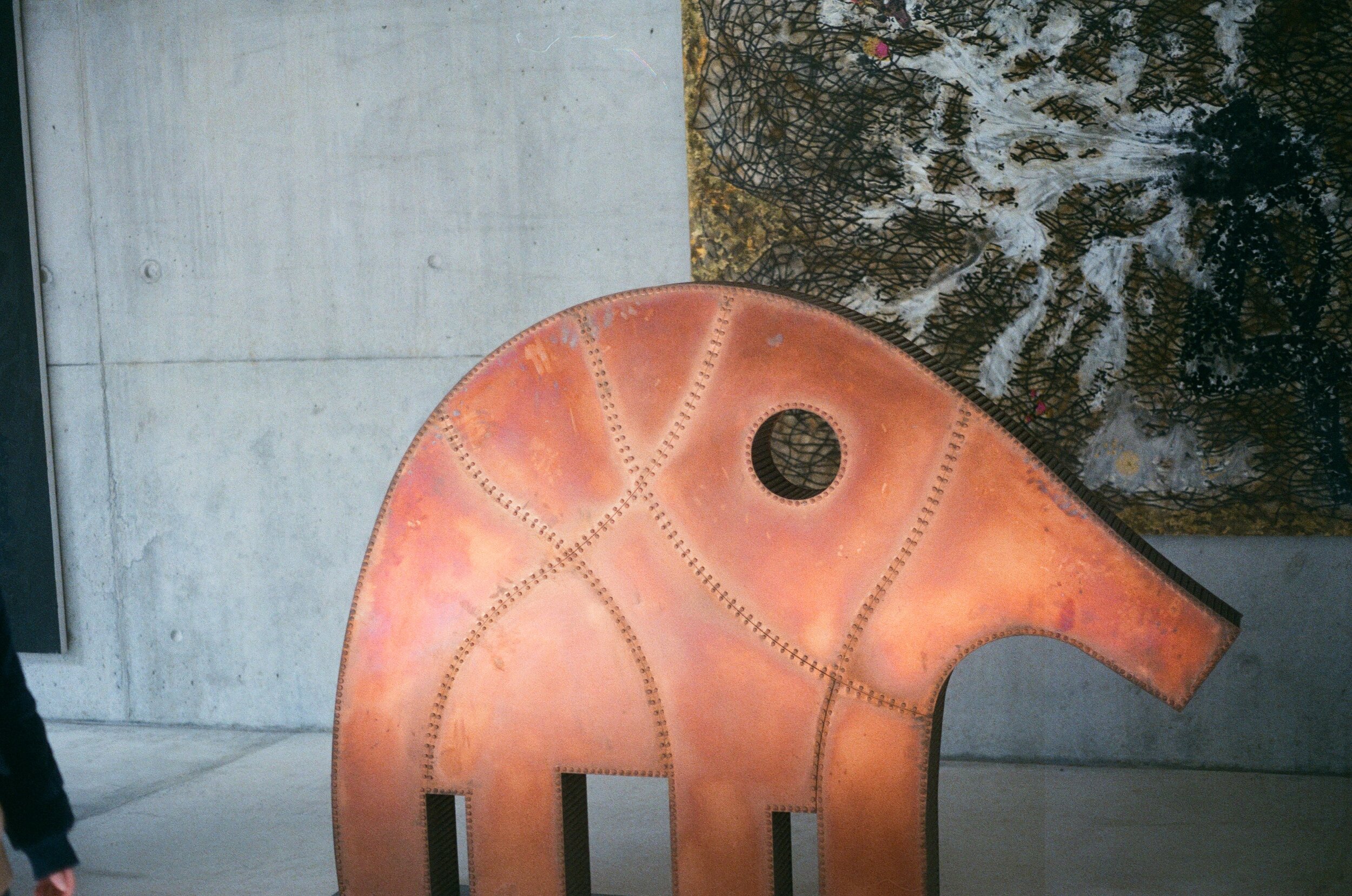
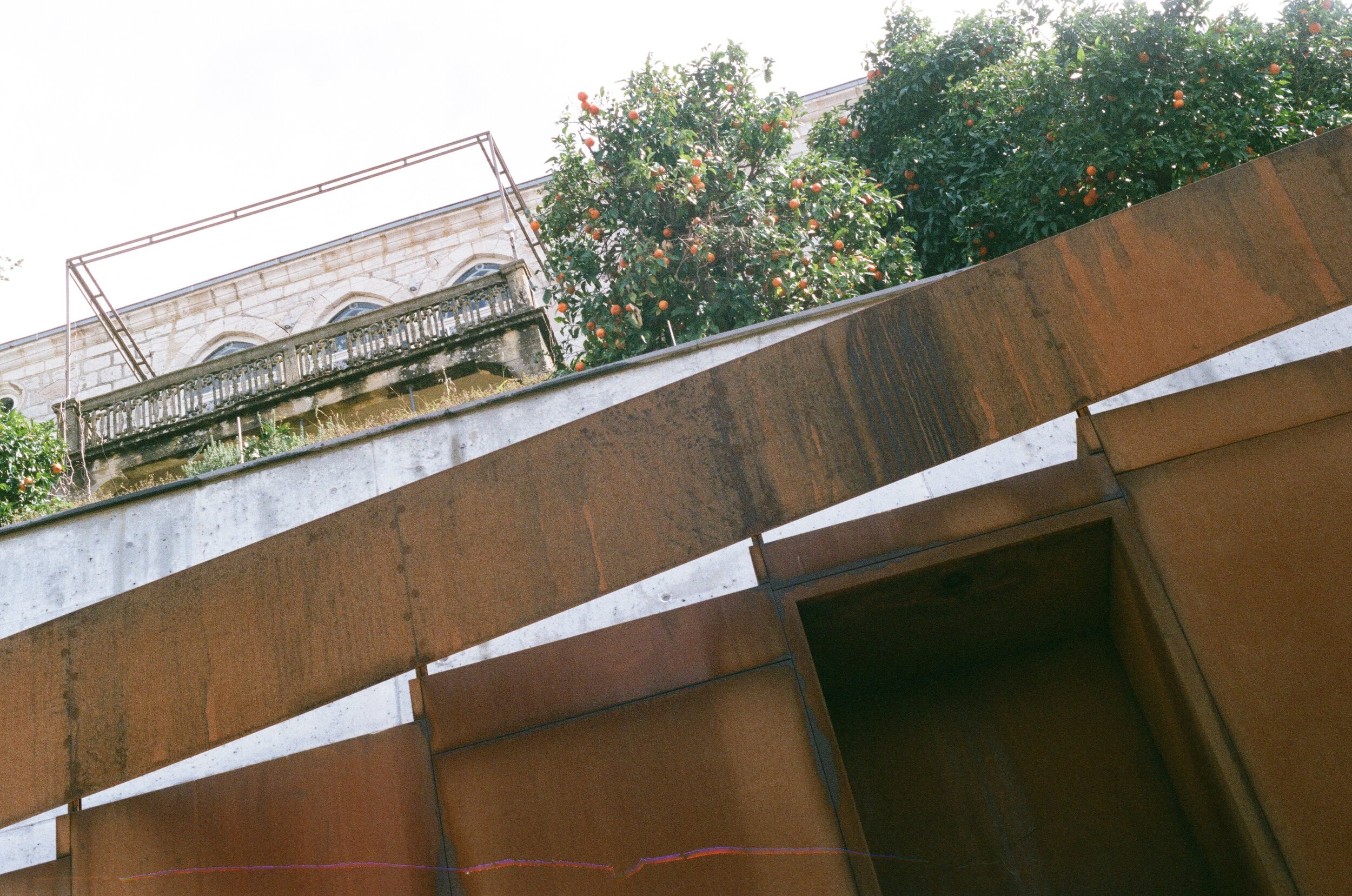
Kneeling, standing or sitting in the presence of God
In most Byzantine and Orthodox churches, one might be surprised to find there are no pews. The reason behind this dates to the Protestant Reformation in Europe.
During worship services, Protestant churches did not put emphasis on the liturgical movements, but on the sermon given by the preacher. The interpretation of the Bible by Pastors took center-stage and soon the act of standing, or kneeling gave place to sitting.
When wooden pews appeared in Protestant Temples, the Roman Catholic Church decided to follow the trend. Catholics first bought their own pews, but soon Churchwarden’s started renting them out to Catholics. Prices would vary depending on location and pews soon became an evident marker of social divide. Rich families sat close to the altar whereas poor families would be found at the back.
To this day, most Eastern churches do not have pews and vigorously defend this choice.
Believed to be a passive act, one that creates distance and imbalance between priests and their congregation, sitting is rarely practiced. In the Orthodox Church, a good standing posture is considered essential when receiving liturgy, not as an individual but as a connected group standing close together in the face of God.















































